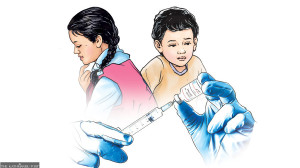Entertainment
Art as Political Protest
On the first week of the new year of 2074 BS and less than a month from the scheduled May 14 local elections, it is perhaps apt to reflect on our political situation.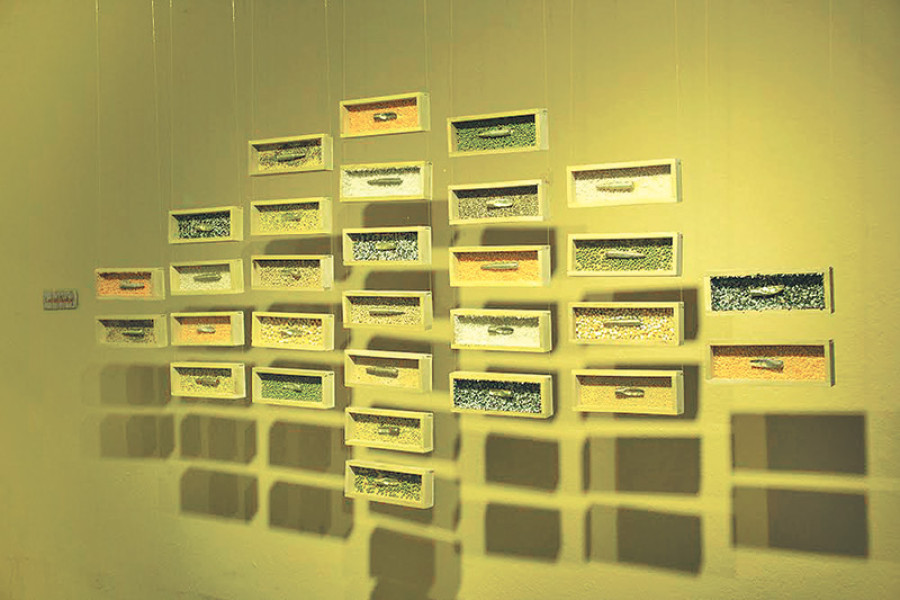
Sophia L Pandé
On the first week of the new year of 2074 BS and less than a month from the scheduled May 14 local elections, it is perhaps apt to reflect on our political situation. The current Kathmandu Triennale (KT) collateral exhibition on show at ArTree in Tripureshwor titled The Work of Art is a Scream of Freedom is relevant as it is timely. The seven discrete pieces on show comment on our current political apathy—a pathetic deadlock that seems to benefit the rotating politicians in power but never the people.
The artists on show here are all from Nepal’s diverse indigenous groups: Newar, Limbu, Gurung, Tharu, and Tamang, and they have specific commentary on the way the state has treated those in this country that have been traditionally marginalised, from women to the landless indigenous peoples, and now those in the Madhes who are perceived as ‘other’, even as they consider themselves Nepali.
Alienation from the central hub of Kathmandu has resulted in hundreds of thousands of labourers leaving for work abroad, mainly in Gulf countries where manual labour is valued, but human rights is not. Nepalis stream out of the country to the count of up to 1500 people per day to work in awful conditions because they cannot find meaningful work at home. This is the subject of Hitman Gurung’s Labour’s Helmet from the series I Have to Feed Myself, My Family and My Country… The work consists of ten repousée helmets that are symbolic of the people who leave to labour in harsh desert construction sites, but also of the loss of the tradition of metalwork that has existed in Nepal for tens of centuries, but is now often abandoned in favour of jobs abroad that require back-breaking work, but pay more than what a skilled artisan may earn at home.

Mekh Limbu’s work at the Triennale has been very strong, his comic strip at the Nepal Art Council (NAC) depicting a labourer’s journey and the photographic account of his own 57-year-old father who has lived in Qatar for 21 years building other people’s homes were on view at the NAC and at the Tangalwood venues respectively during the KT. His work at ArTree is a culmination of video work and portraits of migrant workers that are juxtaposed against his own internal migration within Nepal in his personal quest for a better life. Silent Portraits in Qatar and Kathmandu is an effort to document these predicaments that are entirely ignored by our government that neither ensures rights for its people abroad nor at home.
The idea of home is a strong theme that pervades throughout this joint exhibition, with Bikash Shrestha’s The Family Album showing an ominous progression of the same family portrait, but in each subsequent photograph there is yet another absent family member cut out of the frame. Internal and external migration sunders family members apart, and as with Subas Tamang’s, I Want To Die In My Own House, perhaps the most powerful piece in this show, what are we without our homes and our family members, and how this disintegration of the family unit is affecting the social fabric of Nepal and the youth in their oft-moving homes which are populated only by the very young and the very old is a subject that is very much on the artists’ minds.
Tamang’s work, a loving portrait of his parents, is painstakingly carved onto rough granite slates. His father is a stone carver, and the family has moved to Kathmandu, struggling and dreaming to one day have a home, and a permanent address of their own. Tamang’s home is his parents, he says, and for him this work is a dedication to the struggle of his family as they strive for their basic rights.

Sheelasha Rajbhandari and Lavkant Chaudhary both address rights in their searing works that portray violence against women, and against the indigenous Tharu community, head on. The tiny brass beds that make up Sheelasha’s work are symbolic of the rote belittlement of women’s rights, in Nepal, and the world over, as women are treated as secondary to men even when they make up half of the global population. The Tharu community is similarly oppressed, with the 2015 events in Tikapur resulting in hundreds of young Tharu men being beaten and jailed, many of whom are still incarcerated without any due process. Lavkant’s piece is titled Ostracism and it highlights the forced separation of the Tharu communities from their land, which is all they have to subsist upon as farmers. Each hanging box in the installation contains a different kind of grain or lentil, symbolising the diversity of the terrains across which people have been oppressed and marginalised. On each bed of grain is a bullet, the searing symbol of violence that has now left its irrevocable mark on our country after the Maoist conflict and in the years following it as we continue to struggle to become inclusive; with very little progress.
All of these works are tied together by newcomer Sachin Yogal Shrestha’s Chasma Magowa—a tongue in cheek series of selfies where the artist is depicted wearing glasses or sunglasses that he has borrowed from other people. Sachin is looking for a human connection with the people he borrows from, but he is also commenting on the excessive superficial progression of our society as we move towards simulating our lives on social media, posing in glamorous, carefully constructed shots as we willfully ignore or gloss over the very real troubles at hand; choosing vanity over political engagement on any level.
It is heartening to see so many young, dynamic artists creating dialogue with the issues that are closest to them. What is alarming is the state’s total apathy towards any kind of progressiveness that is often branded as dangerous or revolutionary when it is simply a cry for freedom; like this unique, memorable show.




 13.12°C Kathmandu
13.12°C Kathmandu
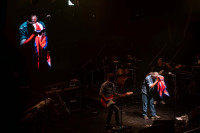


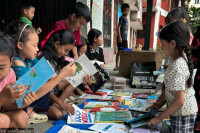
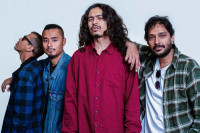
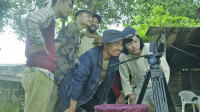


%20(1).jpg&w=300&height=200)

